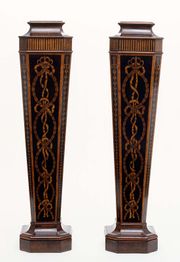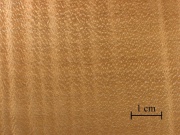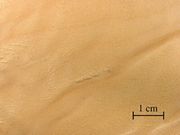Harewood
Jump to navigation
Jump to search
Description
An unstandardized name use for the following timbers:
1) Sycamore maple or English sycamore (Acer pseudoplatanus). Harewood is a deciduous tree native to Europe that has a fine-grained, cream-colored wood. It is used for musical instruments, furniture, inlays and veneers.
2) West Indian Satinwood (Zanthoxylon flavuum). Satinwood has an irregular grain an a yellowish color that darkens as it ages.
Synonyms and Related Terms
1) Acer pseudoplatanus; sycamore maple, English sycamore; sicomoro, arce blanco (Esp.); padreiro (Port.); Sicomoro (It.); acero montano (It.)
Physical and Chemical Properties
1) Sycamore maple
- Grows to heights of 35 m (115 ft).
- The smooth, gray bark flakes when the tree is older.
- Broad, 5-lobed palmate leaves have long leaf stalks.
- The greenish yellow flowerheads dangle in panicles.
- Seeds are winged and occur in pairs.
- Sapwood is most commonly used - it is white to light brown; Heartwood is darker reddish brown
- Grain is generally straight with a fine even texture
- Rated as non-durable
Working Properties
- Fairly easy to work with both hand and machine tools, though maple has a tendency to burn when being machined with high-speed cutters such as in a router.
- Turns, glues, and finishes well, though blotches can occur when staining, and a pre-conditioner, gel stain, or toner may be necessary to get an even color.
Resources and Citations
- The Wood Database: Sycamore maple
- Schoch, W., Heller, I., Schweingruber, F.H., Kienast, F., 2004:Wood anatomy of central European Species: Great Maple, Sycamore Maple, Acer pseudoplatanus L.
- Random House, Webster's Encyclopedic Unabridged Dictionary of the English Language, Grammercy Book, New York, 1997
- Ralph Mayer, A Dictionary of Art Terms and Techniques, Harper and Row Publishers, New York, 1969 (also 1945 printing)
- George Savage, Art and Antique Restorer's Handbook, Rockliff Publishing Corp, London, 1954
- Wikipedia: https://en.wikipedia.org/wiki/Acer_pseudoplatanus (Accessed October 2020)


